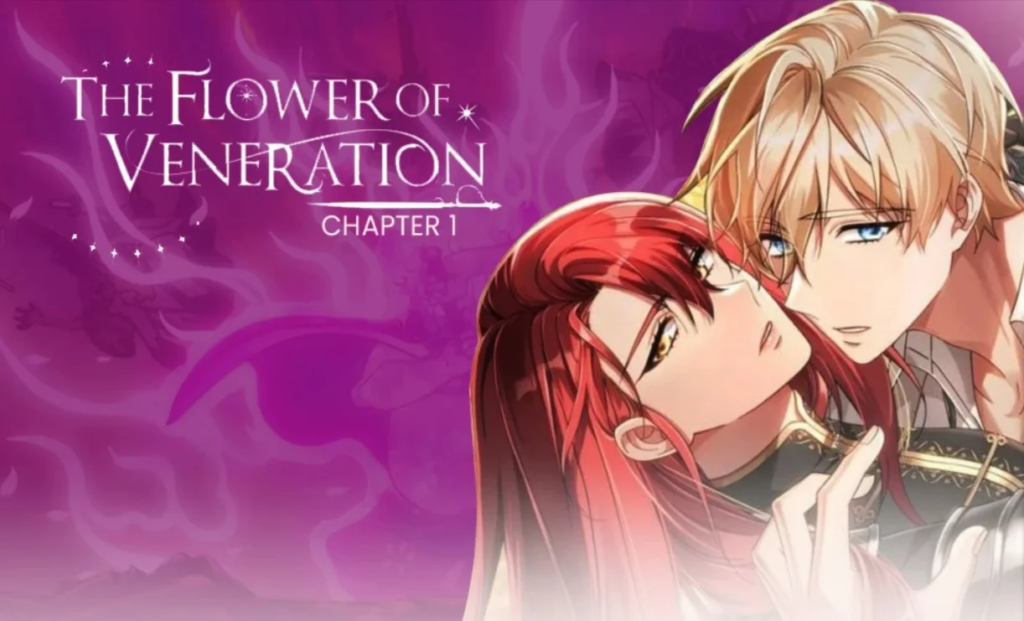Introduction
‘The Flower of Veneration’ is a captivating narrative that has intrigued readers with its enigmatic story and rich cultural backdrop. The unveiling of Chapter 1 marks a significant moment, setting the stage for an epic tale that intertwines mystery, emotion, and profound themes. This article delves deep into the intricacies of Chapter 1, exploring its various elements to provide a comprehensive understanding of its significance.
Historical Background
‘The Flower of Veneration’ finds its roots in ancient folklore, drawing inspiration from stories passed down through generations. The tale is steeped in cultural heritage, reflecting the traditions and values of the society it originates from. Understanding the historical context of the story is crucial in appreciating its depth and resonance with readers.
Summary of Chapter 1
Chapter 1 introduces us to a world filled with mystery and wonder. The narrative begins with the protagonist’s discovery of an ancient flower, revered for its mystical properties. As the story unfolds, we meet key characters who play pivotal roles in the development of the plot. The chapter sets the tone for the journey ahead, hinting at the challenges and revelations that await.
Detailed Analysis
Themes and Motifs
The opening chapter weaves in several recurring themes such as the quest for knowledge, the conflict between tradition and change, and the power of nature. These motifs are intricately linked to the characters’ experiences and the unfolding plot.
Symbolism in Chapter 1
Symbolism is a key element in Chapter 1, with the flower itself representing a myriad of concepts, from purity to the unknown. Other symbols, like the ancient scrolls and the protagonist’s journey, enrich the narrative, offering deeper layers of meaning.
Character Development
Protagonists and Their Traits
The protagonist emerges as a curious and determined individual, whose quest for understanding drives the narrative forward. Other characters, such as the wise elder and the enigmatic guardian of the flower, are introduced with distinct traits that contribute to the story’s complexity.
Antagonists and Their Roles
The antagonists in Chapter 1 are shrouded in mystery, their motives unclear but menacing. Their presence adds tension and sets up potential conflicts that will be explored in subsequent chapters.
Setting Description
Physical Locations
The vivid descriptions of the settings, from lush forests to ancient temples, create a rich tapestry that immerses the reader in the world of ‘The Flower of Veneration.’ These locations are not just backdrops but integral to the story, influencing the characters and events.
Atmosphere and Tone
The tone of Chapter 1 is a blend of wonder and foreboding, capturing the essence of a world where magic and reality intertwine. The atmosphere is carefully crafted to evoke curiosity and anticipation in the reader.
Narrative Style
Author’s Writing Style
The author’s writing style is both lyrical and evocative, drawing readers into the narrative with vivid imagery and compelling descriptions. The use of language is deliberate, enhancing the emotional and thematic depth of the story.
Use of Language and Dialogue
Dialogue in Chapter 1 is sparse but impactful, revealing character dynamics and advancing the plot. The language is rich with cultural nuances, adding authenticity to the narrative.
Literary Devices
Metaphors and Similes
The chapter is replete with metaphors and similes that enrich the narrative. These literary devices are used to draw parallels between the characters’ experiences and broader philosophical concepts.
Foreshadowing and Flashbacks
Foreshadowing hints at future events, creating suspense and intrigue. Flashbacks are used to provide context and background, helping the reader understand the characters’ motivations and the significance of their actions.
Comparison with Other Works
Similarities and Differences
‘The Flower of Veneration’ shares similarities with other epic tales, such as its hero’s journey structure and the exploration of universal themes. However, it stands out due to its unique cultural perspective and symbolic richness.
Influence of Other Literature
The story is influenced by a myriad of literary traditions, from ancient myths to modern fantasy. These influences are woven seamlessly into the narrative, creating a multi-layered reading experience.
Author’s Biography
Life and Influences
The author of ‘The Flower of Veneration’ has a rich background in folklore and mythology, which profoundly influences their writing. Their life experiences and academic pursuits have shaped their narrative style and thematic focus.
Other Notable Works
In addition to ‘The Flower of Veneration,’ the author has penned several other works that explore similar themes of mystery and cultural heritage. These works have garnered critical acclaim and a dedicated readership.
Critical Reception
Initial Reviews and Feedback
Chapter 1 received a warm reception from critics, who praised its rich storytelling and intricate world-building.
Impact on Readers and Critics
The chapter’s release sparked discussions and theories among readers and critics alike, highlighting its impact on the literary community. Its blend of mystery, culture, and emotion resonated deeply with audiences.
Thematic Exploration
Major Themes in the Chapter
Key themes in Chapter 1 include the pursuit of knowledge, the tension between tradition and innovation, and the interplay between humanity and nature.
How These Themes Are Presented
Themes are presented through a combination of narrative events, character interactions, and symbolic elements. The author uses a subtle approach, allowing themes to emerge organically from the story.
Symbolism
Key Symbols and Their Meanings
The flower, as the central symbol, represents purity, mystery, and the quest for enlightenment. Other symbols, such as the ancient scrolls and the protagonist’s journey, add layers of meaning to the narrative.
Importance in the Narrative
Symbolism is crucial in enhancing the depth of the story, providing readers with a richer understanding of the characters’ experiences and the overarching themes.
Cultural Context
Societal Influences on the Story
The story reflects the cultural and societal values of the time, highlighting issues such as the respect for tradition and the reverence for nature. These influences are integral to the narrative, shaping the characters and their actions.
Representation of Culture in the Narrative
Cultural elements are woven into the story through rituals, customs, and beliefs, providing an authentic portrayal of the society in which the tale is set.
Chapter 1 in the Context of the Whole Book
How It Sets the Stage for the Rest of the Book
Chapter 1 serves as a foundation for the rest of the book, introducing key themes, characters, and plotlines. It hints at future conflicts and revelations, building anticipation for subsequent chapters.
Foreshadowing Future Events
The chapter contains several instances of foreshadowing, hinting at future events and challenges the characters will face. These hints create suspense and keep readers engaged.
Personal Reflection
Author’s Intent
The author’s intent in Chapter 1 is to draw readers into a world of mystery and wonder, setting the stage for a profound exploration of themes and characters.
Reader’s Interpretation
Readers may interpret Chapter 1 in various ways, finding personal connections to the themes of quest and discovery. The chapter invites readers to reflect on their own experiences and beliefs.
Influence on Modern Literature
Legacy of ‘The Flower of Veneration’
‘The Flower of Veneration’ has left a lasting impact on modern literature, inspiring countless stories with its blend of cultural richness and universal themes.
Modern Works Influenced by It
Many contemporary works draw inspiration from ‘The Flower of Veneration,’ reflecting its enduring legacy in the literary world.
Expert Opinions
Insights from Literary Critics
Literary critics have lauded Chapter 1 for its intricate storytelling and deep cultural resonance. Their insights highlight the chapter’s strengths and its contribution to the broader narrative.
Quotes from Scholars
Scholars have praised the chapter’s use of symbolism and its exploration of universal themes, noting its significance in the context of the entire work.
Reader’s Guide
Questions for Reflection
- What does the flower symbolize in the story?
- How do the cultural elements influence the characters’ actions?
- What themes stand out the most in Chapter 1?
Discussion Points
- The role of tradition vs. innovation
- The significance of the protagonist’s journey
- The impact of symbolism on the narrative
Adaptations
Film and Television Adaptations
‘The Flower of Veneration’ has been adapted into various media, each interpretation offering a unique take on the story. These adaptations bring the narrative to life, reaching a wider audience.
Differences Between the Book and Adaptations
While adaptations strive to stay true to the source material, there are inevitable differences. These variations often spark discussions among fans and highlight different aspects of the story.
Fan Theories
Popular Theories About the Story
Fans have developed numerous theories about the mysteries in Chapter 1, speculating on the true nature of the flower and the future of the characters.
Speculations About Future Chapters
The chapter’s cliffhangers and foreshadowing have led to widespread speculation about future events, keeping readers eagerly anticipating the next installments.
Interactive Content
Quizzes and Games Related to Chapter 1
Interactive content, such as quizzes and games, allows readers to engage with the story in new ways, testing their knowledge and deepening their connection to the narrative.
Online Discussions and Forums
Online communities provide a platform for readers to discuss their interpretations and theories, fostering a shared experience and enhancing their enjoyment of the story.
Visual Content
Illustrations and Fan Art
Visual representations, including illustrations and fan art, bring the story to life and offer new perspectives on the characters and settings.
Importance of Visual Representation
Visual content complements the written narrative, enhancing the reader’s imagination and understanding of the story.
Reading Recommendations
Books Similar to ‘The Flower of Veneration’
For readers who enjoyed Chapter 1, there are numerous other books with similar themes and styles that they might find appealing.
Other Works by the Author
Exploring the author’s other works provides additional insight into their storytelling style and recurring themes.
Conclusion
Summary of Key Points
Chapter 1 of ‘The Flower of Veneration’ sets the stage for an epic tale filled with mystery, cultural richness, and profound themes. Its intricate narrative and compelling characters draw readers into a world of wonder and anticipation.
Final Thoughts and Reflections
As readers embark on the journey through ‘The Flower of Veneration,’ they are invited to reflect on the themes and symbolism presented in Chapter 1. The chapter serves as a powerful introduction to a story that promises to captivate and inspire.






Be First to Comment